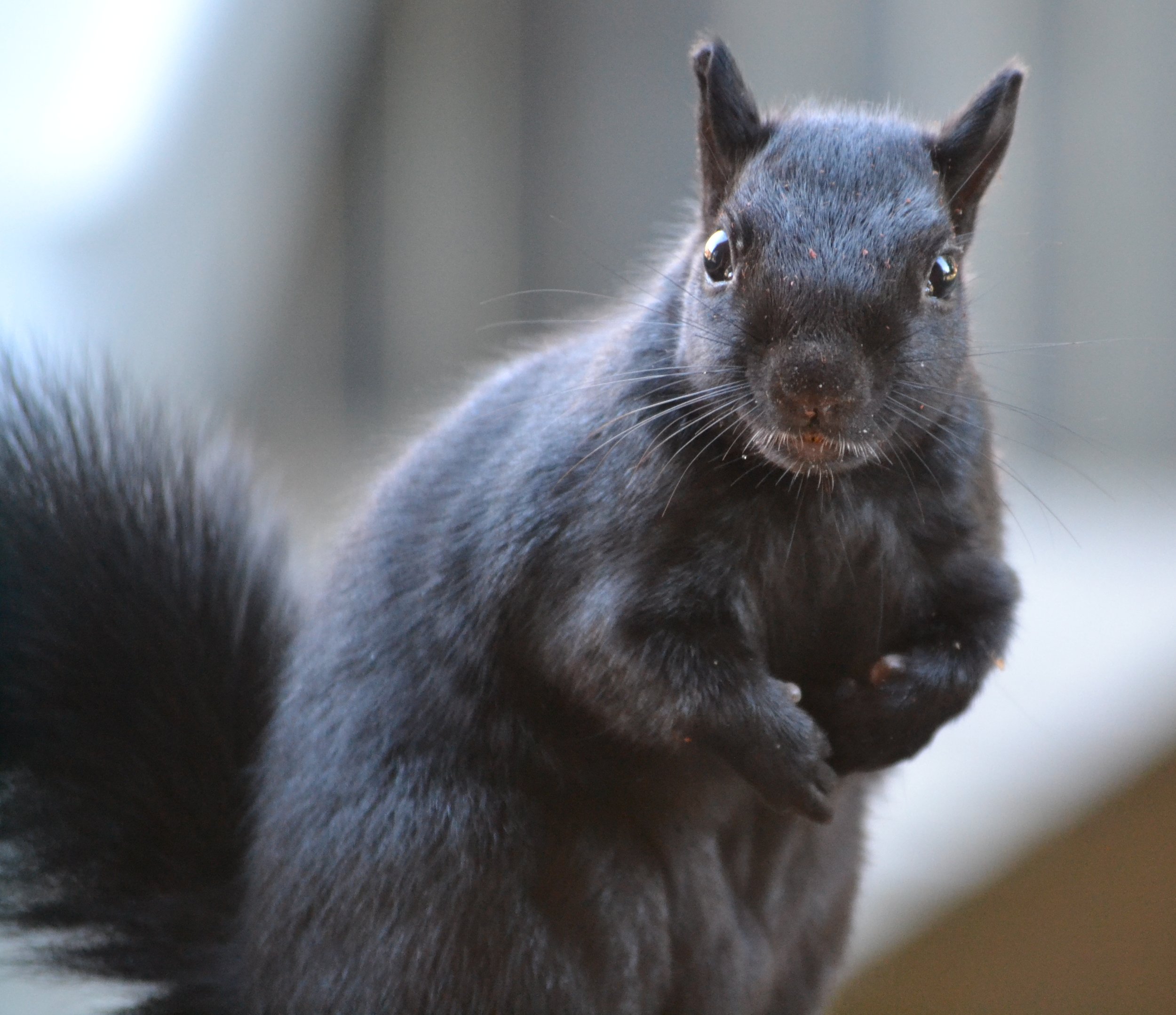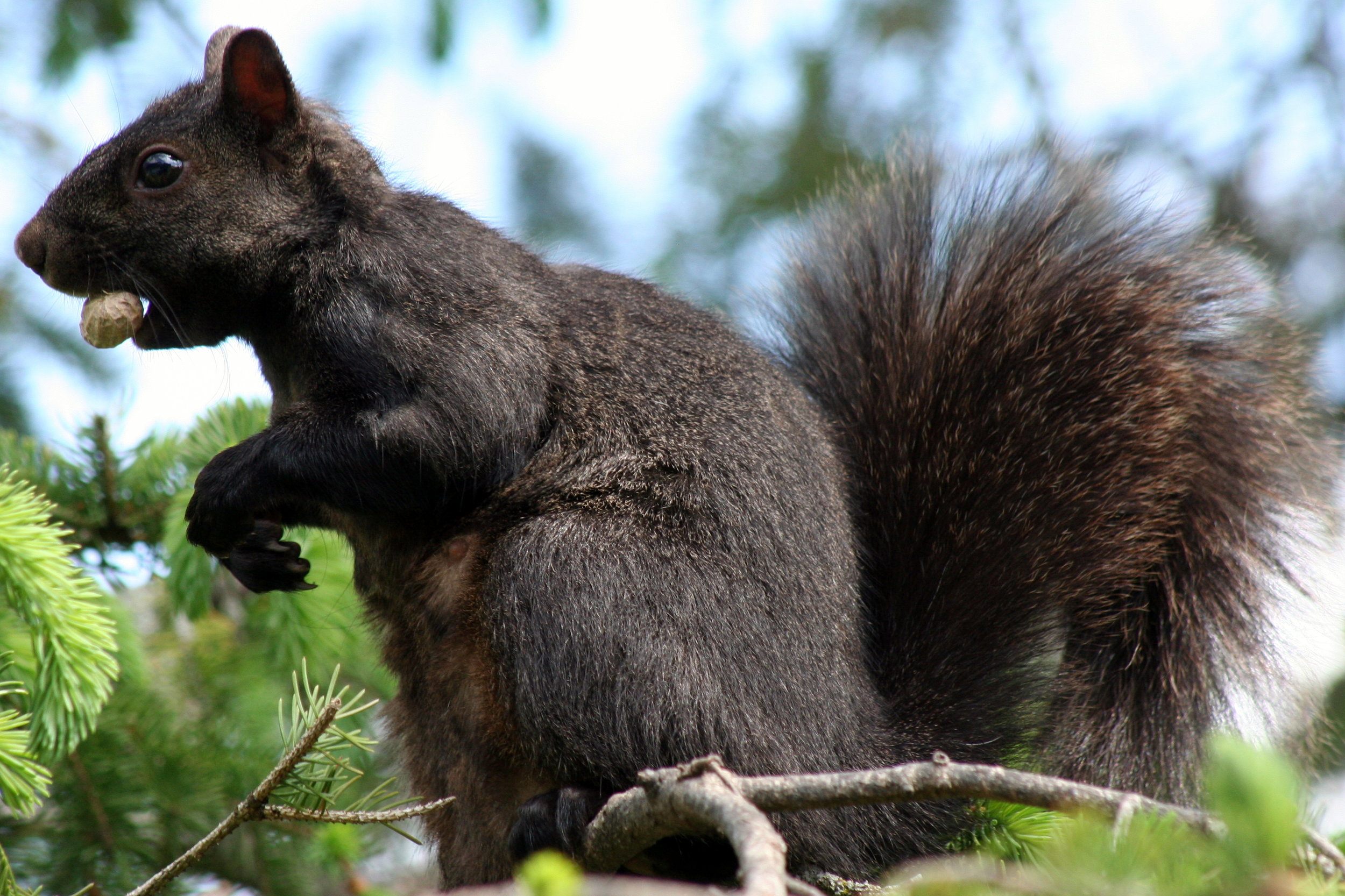Black Squirrel
The black squirrel occurs as a "melanistic" subgroup of both the eastern gray squirrel and the fox squirrel. Their habitat extends throughout the Midwestern United States, in some areas of the Northeastern United States, eastern Canada, and also in the United Kingdom. The overall population of black squirrels is small when compared to that of the gray squirrel. The black fur color can occur naturally as a mutation in populations of gray squirrels, but it is rare. The rarity of the black squirrel has caused many people to admire them, and the black squirrels enjoy great affection in some places as mascots. As a rare mutation of both the eastern gray and fox squirrel, individual black squirrels can exist wherever gray or fox squirrels live. Among eastern squirrels, gray mating pairs cannot produce black offspring. Gray squirrels have two copies of a normal pigment gene and black squirrels have either one or two copies of a mutant pigment gene. If a black squirrel has two copies of the mutant gene it will be jet black. If it has one copy of a mutant gene and one normal gene it will be brown-black. In areas with high concentrations of black squirrels, litters of mixed-color individuals are common.
The black subgroup seems to have been predominant throughout North America prior to the arrival of Europeans in the 16th century, when America's old growth forests were still abundant and thick. The black squirrel's dark color helped them hide in these very dense and shaded old growth forests. As time passed, extensive deforestation and the hunting of squirrels for their meat and pelts led to biological advantages for gray colored individuals; their light-gray color became advantageous in their newly changed habitat. Today, the black subgroup is particularly abundant in the northern part of the eastern gray squirrel's range. This is due to two main factors. Firstly, black squirrels have a considerably higher cold tolerance than that of gray squirrels. Secondly, because the northern forests are denser and thus darker, the black squirrel enjoys the advantage of better concealment among this dimly lit habitat.
Large natural populations of black (eastern gray) squirrels can be found throughout Ontario and in several parts of Ohio, Maryland, Michigan, Houston, TX, Indiana, Virginia, Washington, D.C., Iowa, Wisconsin, Minnesota, and Pennsylvania.

By DaPuglet. CC BY-SA 2.0, via Flickr

By Robert Taylor. CC BY 2.0, via Flickr
